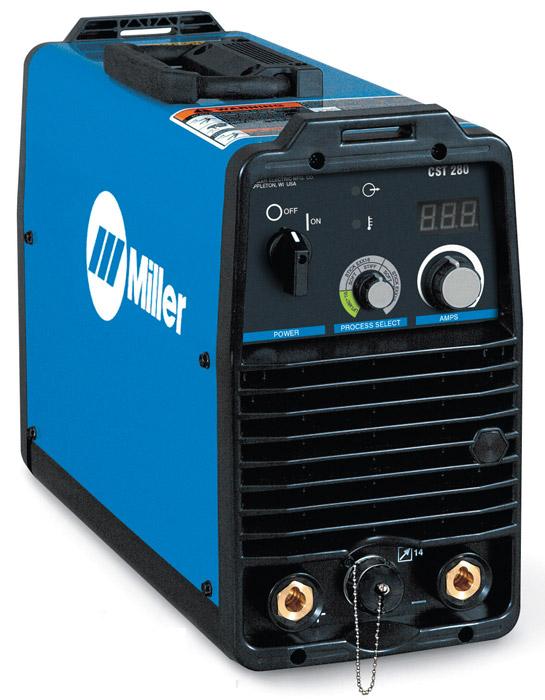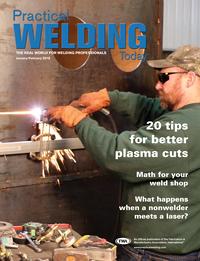- FMA
- The Fabricator
- FABTECH
- Canadian Metalworking
Categories
- Additive Manufacturing
- Aluminum Welding
- Arc Welding
- Assembly and Joining
- Automation and Robotics
- Bending and Forming
- Consumables
- Cutting and Weld Prep
- Electric Vehicles
- En Español
- Finishing
- Hydroforming
- Laser Cutting
- Laser Welding
- Machining
- Manufacturing Software
- Materials Handling
- Metals/Materials
- Oxyfuel Cutting
- Plasma Cutting
- Power Tools
- Punching and Other Holemaking
- Roll Forming
- Safety
- Sawing
- Shearing
- Shop Management
- Testing and Measuring
- Tube and Pipe Fabrication
- Tube and Pipe Production
- Waterjet Cutting
Industry Directory
Webcasts
Podcasts
FAB 40
Advertise
Subscribe
Account Login
Search
Add-on equipment makes a difference in SMAW
Digital meter provides confidence, peace of mind
- By Amanda Carlson
- January 27, 2016
- Article
- Arc Welding
While welding as a whole has benefited from an incredible amount of technology advancement over the years, one process has always appeared relatively unchanged—shielded metal arc welding (SMAW), also known as stick welding. However, small technology upgrades to power sources and optional features have helped give the process a bit of a boost.
While you may not find stick welding in high-production shop environments, the process is still very much alive and well out in the field, in shipyards, and in power plant construction and repair. Technology advancements are improving the process, but those improvements just aren’t quite as dramatic as those taking place in, for example, gas metal arc welding (GMAW), said Joe Ryan, market segment manager—oil and gas processing at Miller Electric Mfg. Co., Appleton, Wis.
“Stick welding is stick welding. However, in recent years we’ve focused a lot on arc performance even for different electrodes and stick welding in general. It’s hard to talk about stick welding because it seems as though it’s been around since the dawn of time, but it has not been forgotten; it’s still very popular,” Ryan explained.
“As much as 80 percent of welding in field environments is done by stick, and that number is probably closer to 90 or 95 percent when you get into international markets.”
Like other welding processes, stick welding relies on the skills of the welder to lay a sound bead that conforms to strict parameters. Unlike other methods, however, not as much can or has been done to make the process friendly to beginners. When welding to a specific procedure or under strict parameters, it is important that every welder be on the same page. This can be a difficult scenario to police for quality control personnel, especially when welders are holed up in an awkward position or welding in an area difficult for quality control to maneuver.
To help address that need, Miller now offers an optional digital meter for its CST™ 280 series stick and GTAW power source. According to Ryan, two core reasons led to this offering.
First, it gives operators the ability to set their amperages more accurately.
“Without a meter, you don’t know if you’re getting 65 amps, 67 amps, 85 amps, or 87 amps. Having that digital recognition allows the welding operator to set that precisely and within their required procedure,” Ryan explained.
The CST power source is used heavily in power plant construction and process pipe facilities, where the operator must follow a weld procedure, he added. The digital meter makes is much easier for operators to set their power sources to weld within the parameters allowed.The second reason is it provides additional and more accurate quality control (QC).
“We know that the demand for increased weld quality and inspection is growing and becoming more prevalent and more important to make sure welders are welding within desired parameters. So that quick visual representation, instead of requiring an inspector to clamp on an external ampmeter to read the current as the welder is welding, is less intrusive,” Ryan said.
The need for a digital meter originated with some Miller international customers, mainly in Russia and Brazil. Ryan surmises that the reason has to do with the skill level of the welding workforce in those regions. The meter allows the welder to identify quickly both preset and welding amperage levels, giving them confidence that they are welding within specified parameters.
While the meter can help welders work with confidence, it cannot turn an unskilled welder into a skilled one.
“It might help them to know what amperage they are running so they can remember it and learn over time, but the technique is the technique, and you still have to learn that. If, for example, you’re welding high-pressure steam lines, those are very difficult welds to make, especially in the field.”
The power source weighs 41 lbs., comes standard with a 6-ft. power cable, and is fully compatible with Miller wireless remote control technology, giving welders the ability to work up to 300 ft. away from the power source. Adaptive Hot Start™ for arc starts increases the output amperage automatically at the start of the weld, preventing the electrode from sticking.
About the Author

Amanda Carlson
2135 Point Blvd
Elgin, IL 60123
815-227-8260
Amanda Carlson was named as the editor for The WELDER in January 2017. She is responsible for coordinating and writing or editing all of the magazine’s editorial content. Before joining The WELDER, Amanda was a news editor for two years, coordinating and editing all product and industry news items for several publications and thefabricator.com.
About the Publication
Related Companies
subscribe now

The Welder, formerly known as Practical Welding Today, is a showcase of the real people who make the products we use and work with every day. This magazine has served the welding community in North America well for more than 20 years.
start your free subscription- Stay connected from anywhere

Easily access valuable industry resources now with full access to the digital edition of The Fabricator.

Easily access valuable industry resources now with full access to the digital edition of The Welder.

Easily access valuable industry resources now with full access to the digital edition of The Tube and Pipe Journal.
- Podcasting
- Podcast:
- The Fabricator Podcast
- Published:
- 04/16/2024
- Running Time:
- 63:29
In this episode of The Fabricator Podcast, Caleb Chamberlain, co-founder and CEO of OSH Cut, discusses his company’s...
- Industry Events
16th Annual Safety Conference
- April 30 - May 1, 2024
- Elgin,
Pipe and Tube Conference
- May 21 - 22, 2024
- Omaha, NE
World-Class Roll Forming Workshop
- June 5 - 6, 2024
- Louisville, KY
Advanced Laser Application Workshop
- June 25 - 27, 2024
- Novi, MI
































